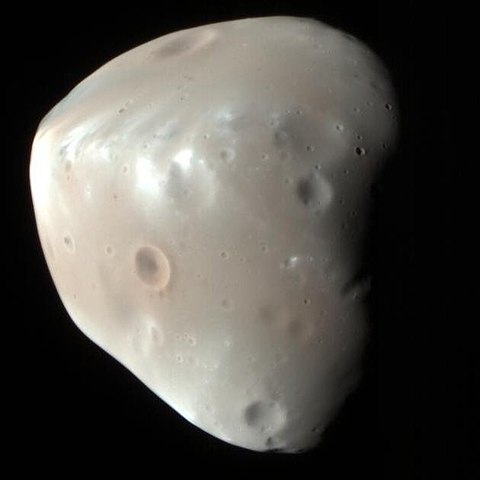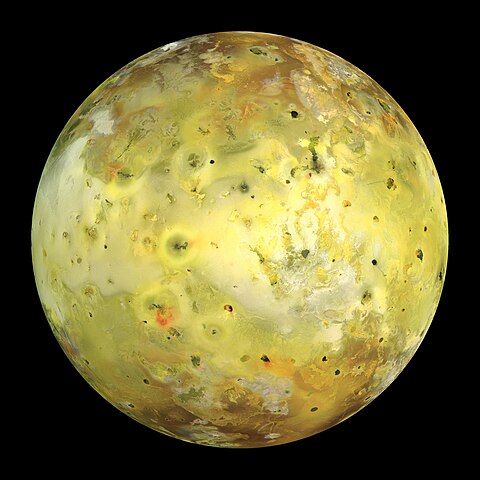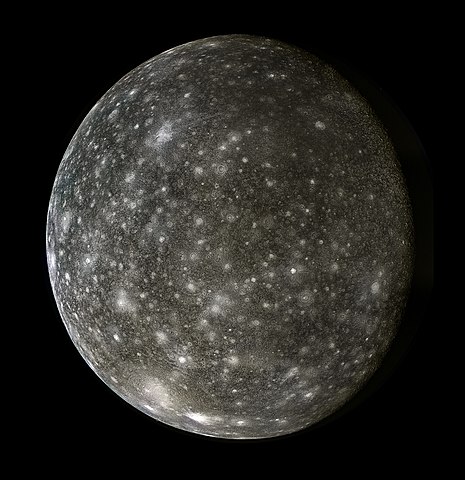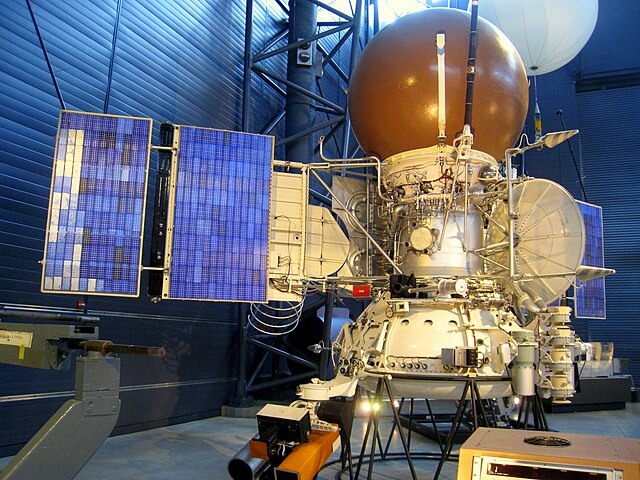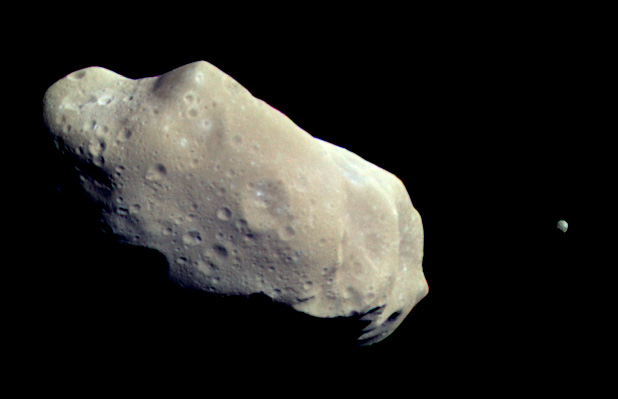1 day / second
0.5 AU
Phobos
Moon of Mars
A small, heavily cratered moon that orbits so close to Mars that it will eventually break apart or crash into the planet due to tidal forces.
Key Facts
learn more | Wikipedia |
mass | 1.0659e+16 kg |
radius | 11.267 km |
semi-major axis | 9,376 km |
eccentricity | 0.015 |
inclination | 26.283º |
longitude of the ascending node | 0º |
argument of periapsis | 0º |
orbital period | 7.657 hours |
sidereal rotation period | 7.653 hours |
axial tilt | 0º |
surface gravity | 0.001 g |
discovery date | August 17, 1877 |
discovered by | Asaph Hall at the United States Naval Observatory |
name origins | Named after Phobos, the Greek god of fear and panic |
dimensions | 22.5 km in diameter |
rotation | Tidally locked to Mars |
albedo | 0.071 |
material composition | Rocky body similar to C-type asteroids |
density | 1.876 g/cm³ |
Parent Planet
Mars
A cold, dusty red planet with massive extinct volcanoes, deep canyons, frozen polar caps, and evidence of ancient water flows, making it the most Earth-like planet in the Solar System.



